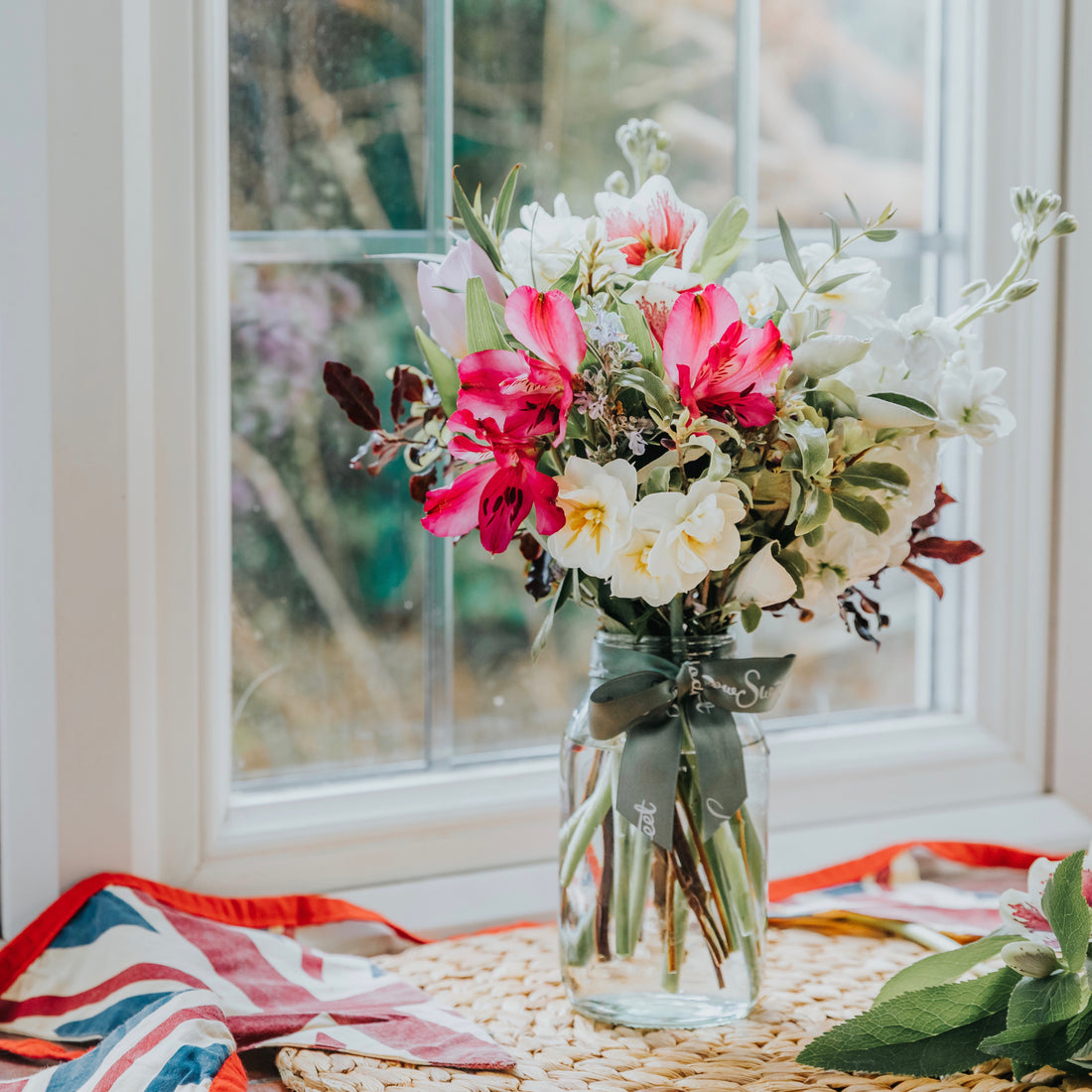
Are cut flowers bad for the environment?
Share
Are cut flowers sustainable?
It's now common for us to ask where our food comes from and supermarkets make a point of sourcing British meat and vegetables and telling us about it. So what about where our flowers come from?
The cut flower industry in the UK consists of close to 90% imported flowers and just over 10% British. It didn't use to be like this. In the 1970s there was a flourishing (geddit!) British flower scene but, over the following decades, large scale, automated production in Holland and further afield led to most British growers being outcompeted. Recently, there has been a movement of small-scale growers and more established large-scale family-run nurseries, found often in the 'South Holland' region of East Anglia, to reignite the passion and pride there once was for British grown flowers.
Some imported flowers travel 6000 miles by refrigerated air freight to get to the consumer and a bouquet of imported blooms can have the equivalent carbon footprint as taking a flight from London to Paris. An MSc study found that British grown flowers can have a 90% lower carbon footprint that imported flowers. And The Guardian advises that when it comes to cut flowers, "it pays to buy British and buy small".
The best option is locally-grown outdoor flowers. With our climate the growing season is predominantly between May-Oct. Sourcing under glass British flowers, especially those growers that utilise sustainable heating and lighting methods, in those other months is the next best option.
British, seasonal flower subscription
MeadowSweet offers a British, seasonal flower subscription service and our customers enjoy the full range of British flowers and foliage on offer throughout the year. Receiving flowers regularly means you are always surrounded by beautifully fresh locally-grown flowers.
Go on, be a MeadowSweetie, click here.
